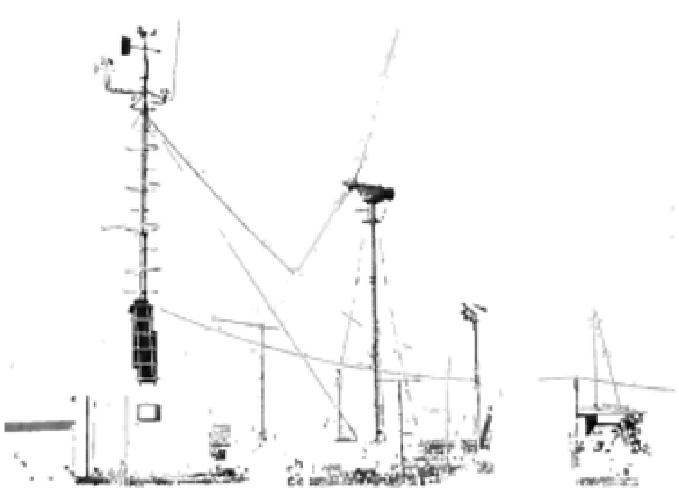Environmental Engineering Reference
In-Depth Information
At the end of 1956 in Schnittlingen, an Allgaier wind turbine
was set-up as the foundation and it was re-furnished with a teetering
hub and two glass-fibre reinforced plastic blades. It had 8.8 kW
output. It was tested to gather experience with the material and
the modified construction. Assembly of the W-34 begun on the test
field in August 1957 and on 4 September it first went into operation.
The first grid connection took place on 11 December 1957. One day
later the system already realised the first full load.
Figure 17.7
Wind power test field in Stötten—W-34 wind turbine (in front)
and 2-bladed Allgaier WEC 10 turbine (behind), ca. 1957
(Photo: Sepp Armbrust, Collection of Jan Oelker).
The W-34 was only a pilot wind turbine, and it realised the
highest output coefficient measured until that date on a wind
turbine. It did not attain high power production. Still the experience
gained with this pilot plant, and the basic concept of the lightweight
construction and blade adjustment Hütter had favoured were
considered in later developments. Hütter had the leading role of
pioneer for the development of the modern use of wind power
in Germany, and later also in America, comparable to his Danish
colleague Johannes Juul in the northern neighbour country. As
diferent as their concepts may have been, with their research
after World War II, Juul and Hütter developed the principles of




Search WWH ::

Custom Search